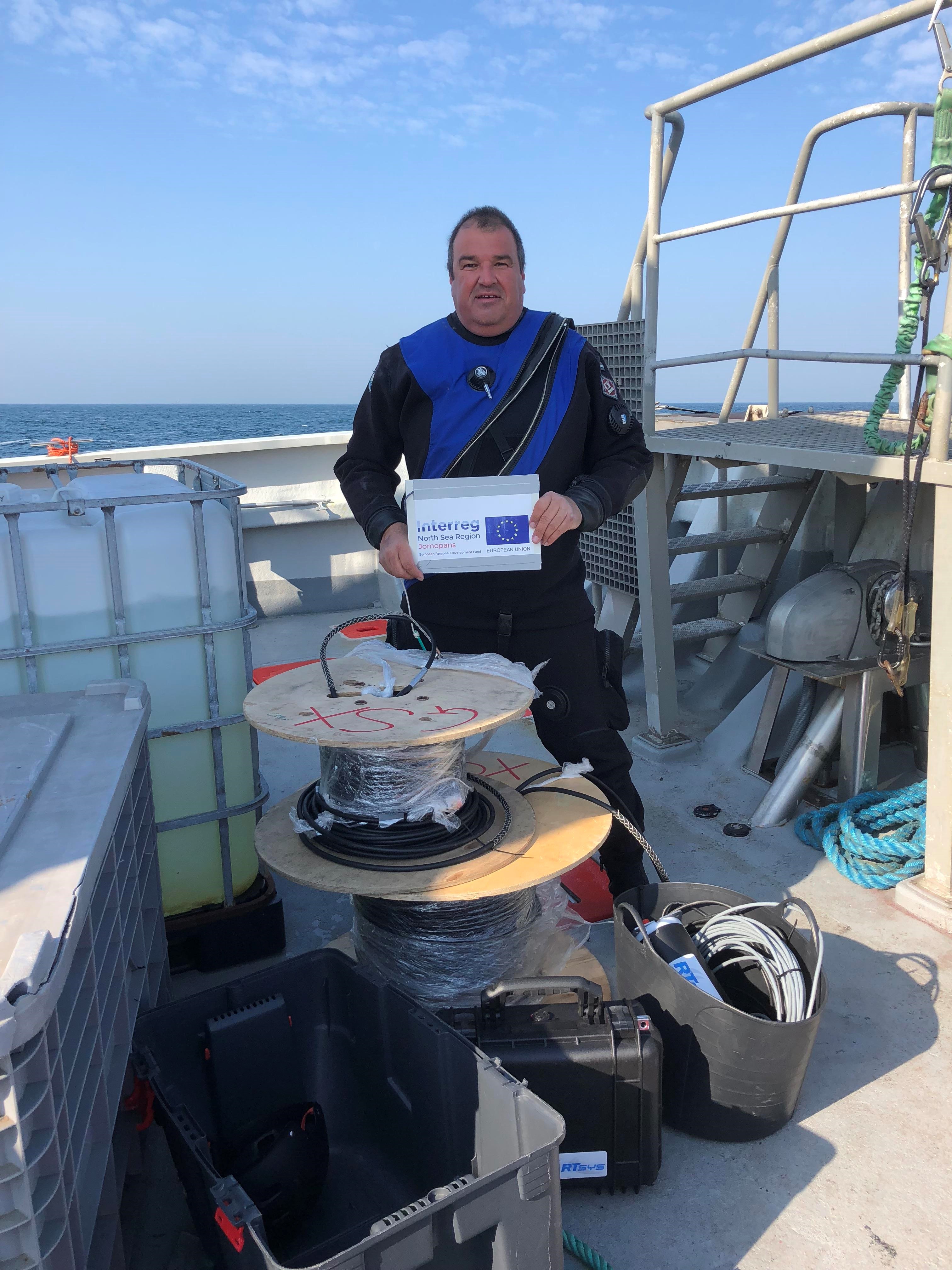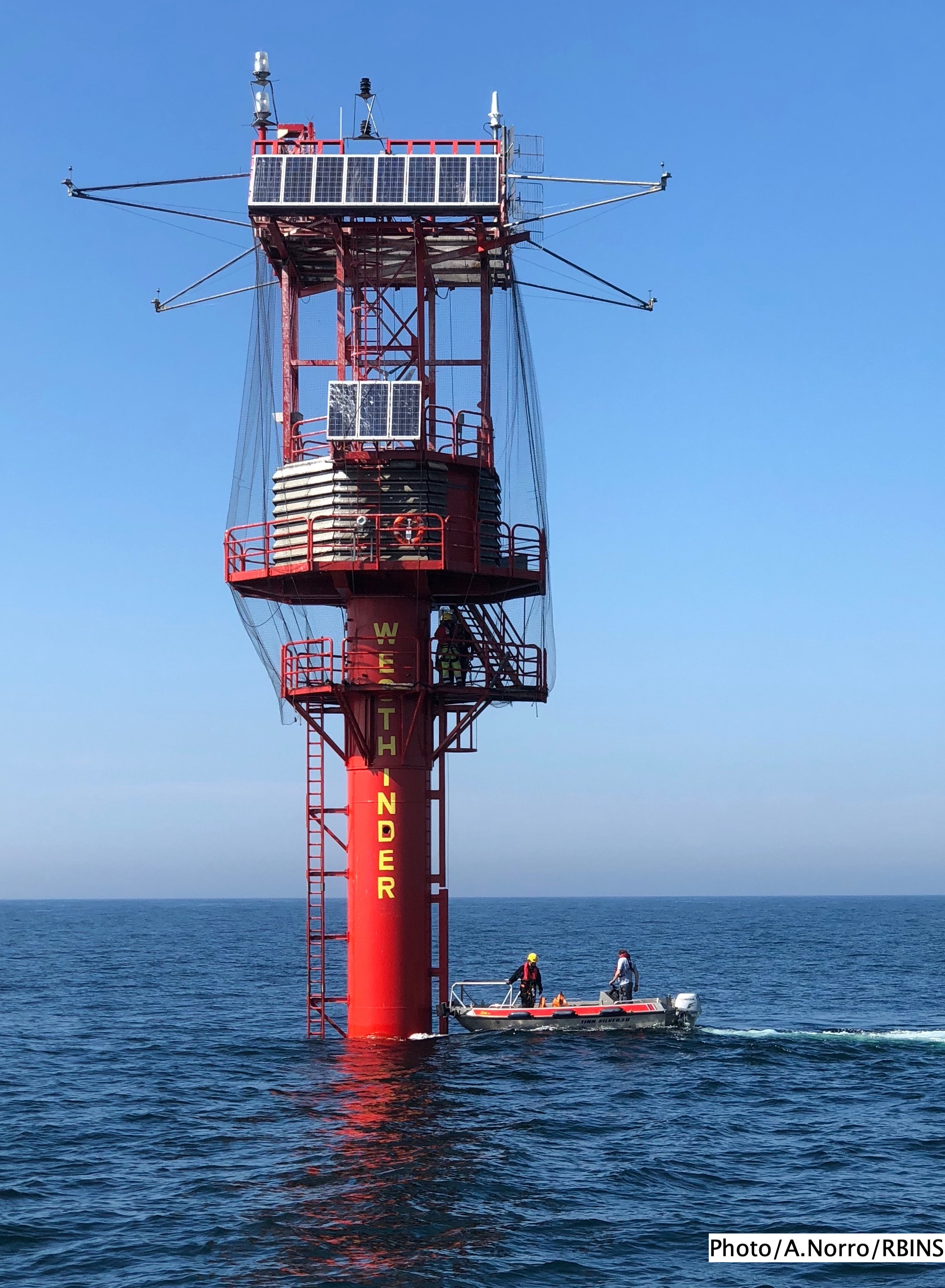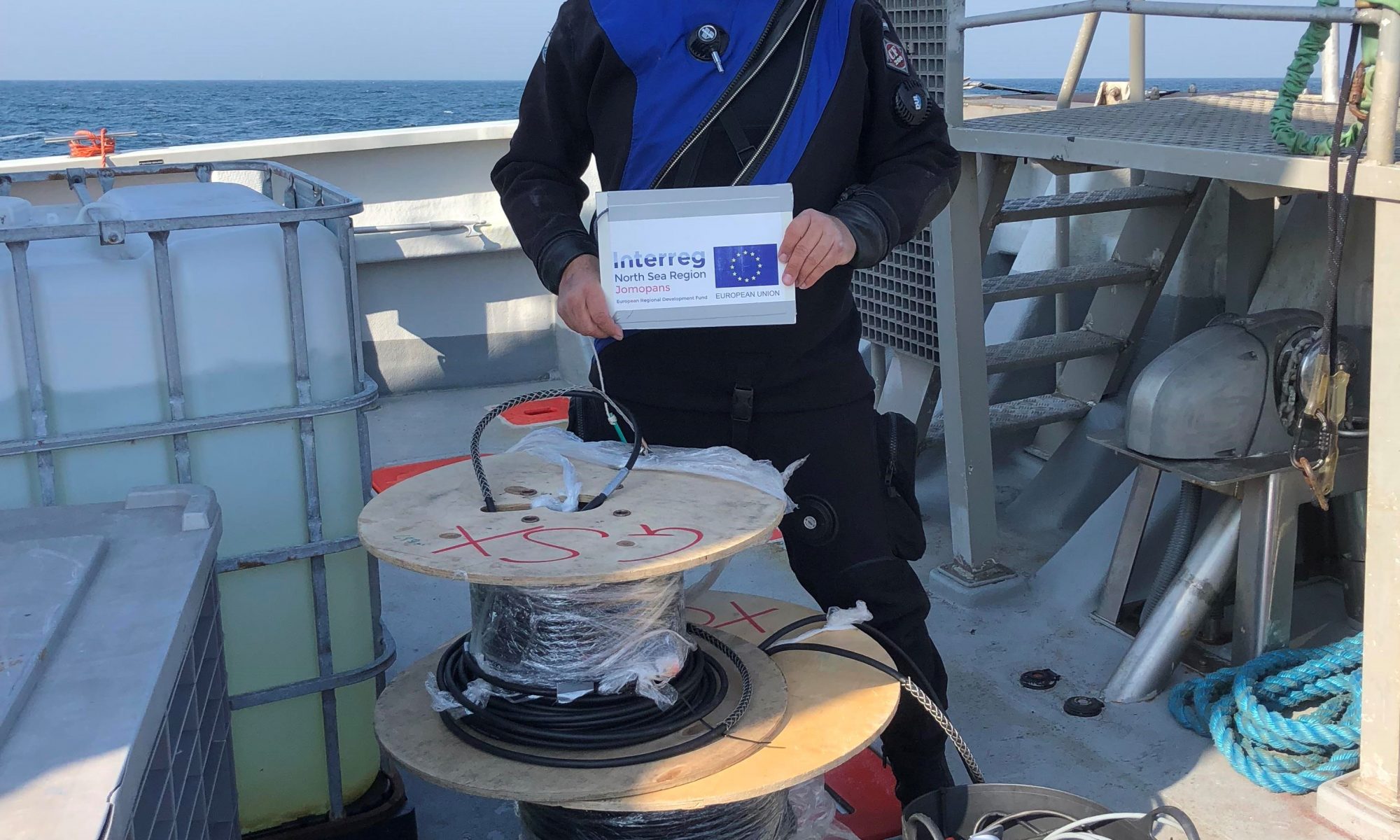Geluid is overal. Niet alleen op het land, maar ook in de zeeën en oceanen. Sommige geluiden zijn van natuurlijke oorsprong, maar ook menselijke activiteiten dragen bij aan het mariene geluidslandschap. We hebben nog geen goed zicht op de types en de verspreiding van deze onderwater-geluiden, laat staan op de effecten die ze kunnen hebben op de mariene fauna. Eind mei 2019 werd in het Belgische deel van de Noordzee een permanent akoestisch opnamestation geïnstalleerd. Deze belangrijke verwezenlijking is gekaderd in het project ‘Joint Monitoring Programme for Ambient Noise North Sea’ (JOMOPANS). De nieuwe apparatuur zal wetenschappers helpen begrijpen hoe het onderwatergeluid over de Noordzee is verspreid.

Als u zich de onderwaterwereld voorstelt als een stille en serene wereld, moet u die gedachte misschien herzien. Geluiden zijn alomtegenwoordig, ook in het mariene milieu. Onderwatergeluid kan worden geproduceerd door natuurlijke (golven, weer, dieren) en antropogene (scheepvaart, bouw) bronnen. Ons begrip van de effecten van deze geluiden op de mariene fauna is echter nog steeds beperkt. In de afgelopen jaren kreeg de introductie van onderwatergeluid in het mariene milieu meer politieke en wetenschappelijke aandacht en worden er monitoringsystemen opgezet.
Impulsief geluid
Het grootste deel van de monitoring-inspanning gaat naar impulsief geluid. Deze categorie van geluid bestaat uit geluiden met een korte duur (impulsachtig), die grotendeels ongewenst en van antropogene oorsprong zijn. Het heien van funderingspalen bij de bouw van offshore windturbines, sonars en de vernietiging van munitie op zee zijn de bekendste bronnen van impulsief geluid. Deze kunnen schadelijk zijn voor de mariene fauna. Een tijdelijke verplaatsing van Bruinvissen Phocoena phocoena werd al aangetoond tijdens heiwerkzaamheden, en wetenschappers hebben ook enig inzicht gekregen in de effecten van impulsieve geluiden op vissen. Maar om de volledige impact op deze en andere mariene organismen te begrijpen, is nog veel meer onderzoek nodig. De groeiende kennis wordt vertaald in regelgeving. Zo schrijft de Belgische wetgeving nu al voor dat het geluidsniveau van impulsieve geluiden bij heiwerkzaamheden niet hoger mag zijn dan het niveau waarop schadelijke effecten kunnen worden aangetoond. De drempelwaarde is momenteel gedefinieerd op 185 dB op 750 m van de geluidsbron. Wanneer deze grenswaarde wordt overschreden, moeten er geluidsbeperkende maatregelen worden toegepast.
Continu geluid
Ons begrip van de niveaus en ruimtelijke en temporele patronen van continue omgevingsgeluiden in het mariene milieu is momenteel veel minder ontwikkeld. Deze geluiden – meestal van lage frequenties – kunnen een stijgende trend vertonen als gevolg van de toename van menselijke activiteiten zoals scheepvaart, baggerwerk, zandwinning, visserij en duurzame energieproductie op zee. Mogelijke negatieve effecten op de mariene fauna kunnen subtiel en chronisch zijn en zijn daarom moeilijker in te schatten. De beperkte hoeveelheid beschikbare gegevens laat nog geen rapportage aan nationale en internationale beleidsmakers toe.

Doorlopende monitoring van het onderwatergeluid
Aangezien de geluidsbronnen, de geluidsoverdracht en de verspreiding van kwetsbare soorten allemaal grensoverschrijdende kwesties zijn, moeten deze ook grensoverschrijdend worden aangepakt. De internationale rapportage-verplichtingen van de EU-lidstaten in het kader van de Kaderrichtlijn Mariene Strategie (KRMS) vormen een sterke stimulans voor de ontwikkeling van een regionale aanpak, zowel wat het monitoren als de methodologie betreft. België heeft zich effectief geëngageerd om bij te dragen tot een dergelijke internationale aanpak en de resultaten te gebruiken voor de nationale evaluatie. Om dit te bereiken, sloot het Koninklijk Belgisch Instituut voor Natuurwetenschappen (KBIN) zich aan bij het project ‘Joint Monitoring Programme for Ambient Noise North Sea’ (JOMOPANS).
In dit project is KBIN onder meer verantwoordelijk voor de installatie van een permanent akoestisch opnamestation in het Belgische deel van de Noordzee. Het Westhinderplatform werd als geschikte locatie gekozen. De Westhinder fungeerde aanvankelijk als een automatisch elektronisch lichtplatform, en speelt nu ook een belangrijke rol als knooppunt van het monitoringnetwerk van het Vlaams Agentschap voor Maritieme Dienstverlening en Kust. Eind mei 2019 werd het geluidsopnamestation JOMOPANS aan dit platform toegevoegd. Technici van respectievelijk het Agentschap voor Maritieme Dienstverlening en Kust en wetenschappelijke duikers van het KBIN zorgden respectievelijk voor het lucht- en onderwatergedeelte van de installatie. Het instrument zal continu omgevingsgeluid monitoren dat wordt gegenereerd door zowel natuurlijke als antropogene bronnen. Bekijk de illustratieve video!
Naar een op kennis gebaseerd beheer
“Het recent geïnstalleerde akoestische opnamesysteem zal de hoogwaardige data leveren die nodig zijn om de types (niveau en frequentie) en timing van geluiden rond het Belgische meetstation te beschrijven.” zegt Alain Norro, wetenschappelijk duiker van het KBIN. “In combinatie met de gegevens van andere JOMOPANS stations, zullen we zo beginnen te begrijpen hoe het onderwatergeluid over de Noordzee is verspreid.” Het Belgische station zal dan ook een essentieel onderdeel zijn van het netwerk dat de nodige informatie zal leveren om wetenschappers en beheerders in staat te stellen omgevingslawaai te integreren in hun beoordeling van de milieutoestand van de Noordzee. In een volgende stap zal de doeltreffendheid van verschillende opties om de potentiële milieu-impact van omgevingslawaai in het Noordzeebekken te verminderen, worden geëvalueerd.
JOMOPANS is een Interreg-project (Noordzeeregio) dat wordt gefinancierd door het Europees Fonds voor Regionale Ontwikkeling van de Europese Unie. Het projectconsortium bestaat uit 11 partners uit 7 landen (RBINS is de enige Belgische partner) en wordt gecoördineerd door Rijkswaterstaat (Nederland).

